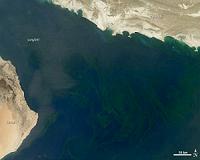 |
Paris, France (ESA) Mar 22, 2010 The tendering process that will result in the supply of Europe's next series of meteorological satellites, Meteosat Third Generation, has reached an advanced stage as ESA invites Thales Alenia Space to enter formal contract negotiations. These negotiations follow rigorous evaluation of the proposals to build the Meteosat Third Generation (MTG) satellites - with the Tender Evaluation Board (TEB) meeting three times since October to review the offers. Two consortia responded to the tender released last July; one led by Astrium Friedrichshafen, with Astrium Toulouse and Astrium Ottobrunn, and one led by Thales Alenia Space Cannes, with OHB Bremen and Kayser Threde Munich. Both offers were rated 'good' technically and stayed below the expected financial envelope. However, owing to the lower price, the TEB recommended that contract negotiations should be made with Thales Alenia Space France. If the negotiations are successful, the Executive will submit the contract proposal to ESA's Industrial Policy Committee for approval and decision by the Member States participating in the programme. This is envisaged in June. Building on Europe's long heritage of monitoring the weather from space, the first MTG is expected to be launched in 2016. ESA's first Earth observation mission, Meteosat-1, was launched back in 1977 and was subsequently followed by another six Meteosats. The operation of the Meteosat satellites was formally handed over from ESA to Eumetsat in 1995. In 2002, the existing Meteosats were joined by the first Meteosat Second Generation (MSG) satellite, which entered service as Meteosat-8. A second MSG (Meteosat-9) was launched in 2005 and two further MSG satellites will guarantee continuity of service in the near future. Ensuring the continuous operation of these weather satellites is vital for numerical weather prediction. From geostationary orbit 36 000 km above the equator, these satellites view a large portion of Earth. This vantage point enables rapidly evolving events to be continuously monitored for the use in weather forecasting. The MTG series will provide significant improvement over the current Meteosat satellites and together with increasing computer power, will undoubtedly take weather forecasting to the next level.
Share This Article With Planet Earth
Related Links Meteosat at ESA Earth Observation News - Suppiliers, Technology and Application
 Sparkle Of The Sea
Sparkle Of The SeaMoffett Field CA (SPX) Mar 23, 2010 This just in from NASA's Aqua satellite: a giant phytoplankton bloom in the Arabian Sea off the coast of Pakistan. The green swirls are, of course, the phytoplankton, which are individually microscopic but combine in huge numbers to form algae blooms like this one. Blooms are common during monsoon season, when strong winds blow across the ocean towards land causing the upwelling of cold se ... read more |
|
| The content herein, unless otherwise known to be public domain, are Copyright 1995-2010 - SpaceDaily. AFP and UPI Wire Stories are copyright Agence France-Presse and United Press International. ESA Portal Reports are copyright European Space Agency. All NASA sourced material is public domain. Additional copyrights may apply in whole or part to other bona fide parties. Advertising does not imply endorsement,agreement or approval of any opinions, statements or information provided by SpaceDaily on any Web page published or hosted by SpaceDaily. Privacy Statement |